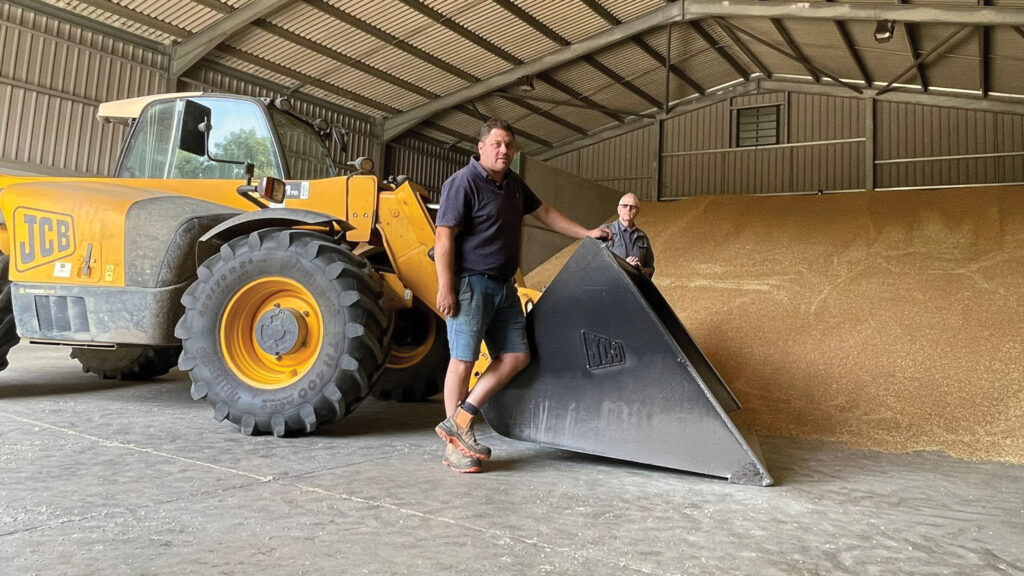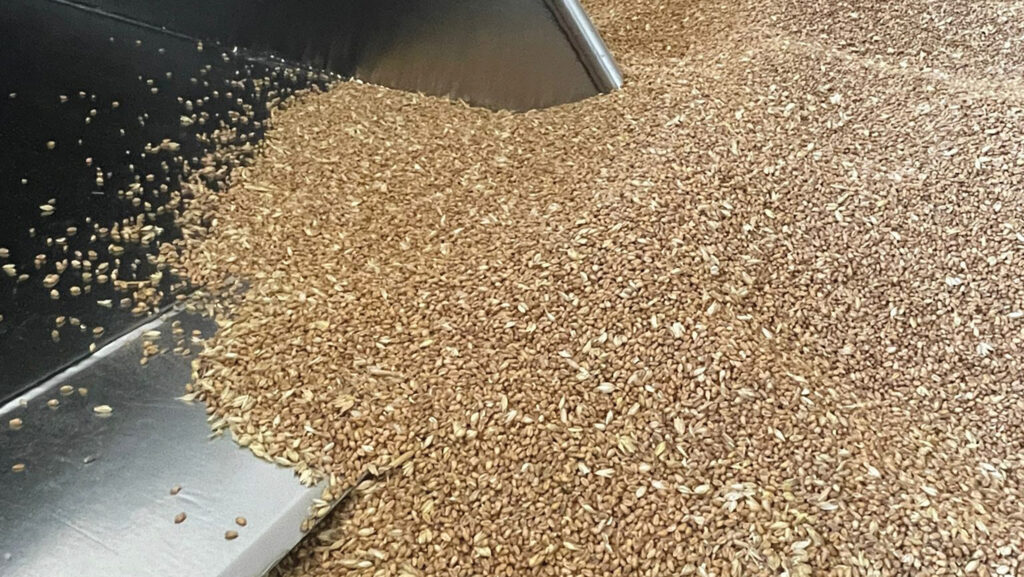Suffolk grower sees harvest success with BYDV-resistant wheat
 Darren Gooderham © Red House Farm
Darren Gooderham © Red House Farm Harvest results suggest growing a wheat variety resistant to barley yellow dwarf virus (BYDV) has paid off on one East Anglia farm, outyielding all the other second wheat varieties by nearly 2t/ha.
Much of the arable land Michael Gooderham and son Darren rent at Red House Farm near Eye, borders large blocks of woodland and grass.
Every field has a grass margin around it, all of which creates a sheltered habitat for aphid vectors of barley yellow dwarf virus.
See also: Advice for growers dealing with ergot this harvest
“After the demise of Redigo Deter we really struggled with the disease, so we’ve been under pressure to get everything sprayed,” says Michael.
“We saw Grouse advertised as a resistant variety and, after doing our own research, decided to try some last autumn. It has paid off.”
Other varieties on the farm received one insecticide spray last autumn, but a second application had to be shelved after more than 100mm of rain fell in late October.
“By late spring, BYDV was evident in the other varieties, particularly in our second wheat which suffered badly” says Michael.

© Red House Farm
Second wheats
Gleam made up the bulk of second wheat, along with 14ha of Grouse, both drilled in early October. The Gleam produced 8.4t/ha. “It was a very disappointing start to our wheat harvest,” says Michael.
“However, I was more than pleasantly surprised with the Grouse, which yielded 10.3t/ha at 15% moisture.”
While the difference was not entirely down to the virus – the Gleam had poorer headlands after the heavy rain – there was very visible BYDV in that variety.
“I could see it clearly when spraying at T2 – the flag leaves were discoloured and going purple in places.”
First wheats
Grouse was also grown as a first wheat after beans, and averaged 10.8t/ha at 76kg/hl specific weight across 51ha. The yield just edged Dawsum after sugar beet, which missed the main aphid migration.
The first-wheat Grouse was drilled in the last week of September at 160kg/ha after a pass with a disc/tine cultivator.
It emerged quickly and, while not particularly thick, it grew away well in the spring and retained its tillers, which filled well.
Chlormequat and Canopy (mepiquat + prohexadione) plant growth regulators were applied at T1, but no more PGR was deemed necessary as the crop only received 200kg/ha of nitrogen after beans.
Disease control saw a T1 mix of Vimoy (isoflucypram) at 1.33 litres/ha plus Kestrel (prothioconazole + tebuconazole) at 0.6 litres/ha.
At T2, Miravis Plus (pydiflumetofen) was applied at 1.5 litres/ha with Era (prothioconazole) at 0.5 litres/ha. This was followed with a T3 of tebuconazole + pyraclostrobin + prothioconazole.
Next season
The Grouse stood very well and stayed clean and Michael will increase the area down to the variety this autumn.
“The variety has done very well as a first and second wheat and we’ve put it into the IPM4 insecticide-free crop option under SFI, which earns an additional £45/ha. It certainly looks to be a good fit for our farm.”

